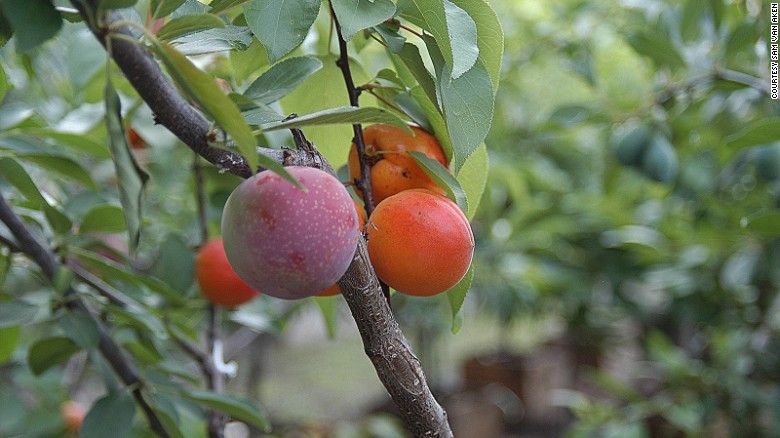The first time Sam Van Aken saw tree branches being grafted and grown onto other trees, he likened it to Frankenstein. Yet, when the process became a full-time fascination, the Syracuse University art professor did not seek to create a monster but a piece of art. The “Tree of 40 Fruit” is Van Aken’s creation, a single tree that can produce 40 different stone fruits, or fruit with pits, including peaches, apricots, plums, cherries and nectarines.
The “Tree of 40 Fruit” is Van Aken’s creation, a single tree that can produce 40 different stone fruits, or fruit with pits, including peaches, apricots, plums, cherries and nectarines.
“I look at the Tree of 40 Fruit as an artwork, a research project and a form of conservation,” Van Aken said in a 2014 TEDxManhattan talk.
He uses chip grafting to create the trees, which involves cutting the buds off a fruit tree and having them heal to the lateral branches of a rootstock tree. Branches from the different fruit trees grow off of the rootstock, which is typically a tree variety natural to the area’s climate and soil. This allows fruit to be grown in areas that might not otherwise support that type of tree. Van Aken has planted 16 trees in seven states across the country.
“Each space is unique,” Van Aken told CNN about the various art museums, university campuses and private land where the trees are grown.
The newest tree is expected to be planted this fall at the Children’s Discovery Museum of San Jose. It will be the centerpiece of the museum’s new garden expansion. Autumn Young, marketing manager for the museum, said the tree will be part of the organization’s environmental education program.
“It’s a wonderful opportunity for children to interact with an art piece that also produces fruit,” Young said. “It’s a teaching opportunity.”
The San Jose tree will feature stone fruit varieties historically from the area, allowing visitors to learn local history.
Van Aken’s project uses more than 250 varieties of stone fruit. Each tree has a different combination of heirloom varieties. It has become a conservation project, too, since commercial markets have reduced the diversity of available stone fruits.
Planting the trees in various locations can increase the area’s fruit diversity, as well as fulfill another important part of Van Aken’s vision: art.
Years of diagramming and planning allow him to sculpt the trees so they are continually blossoming for more than a month. After a spring of brilliant pink, white and crimson blossoms, the branches produce their own distinct fruit.
Van Aken wants people to stumble upon them and ask questions about what they are seeing, since the combination of colors and fruits is out of the ordinary.
The trees grow more diverse in color and fruit each year. Van Aken typically plants them with 20 of the 40 varieties already growing. He returns over several years to prune and graft the rest of the varieties, until it reaches 40. The first tree was planted in 2011 and he expects it to be in full blossom in about three years.
Working with trees as art presents a unique set of challenges. Van Aken was raised on a Pennsylvania farm but said that he developed an even greater respect for growers and farmers with this project. In typical art pieces, artists sculpt and create with their hands. This type of art requires him to learn from and work with the tree as it grows.
“You can’t really control which graft is going to grow more successfully than others,” he said. “There’s not set design or model.”
Van Aken’s trees can be found in Arkansas, Kentucky, Maine, Massachusetts, New Jersey, New York and Pennsylvania.
Source: CNN





































